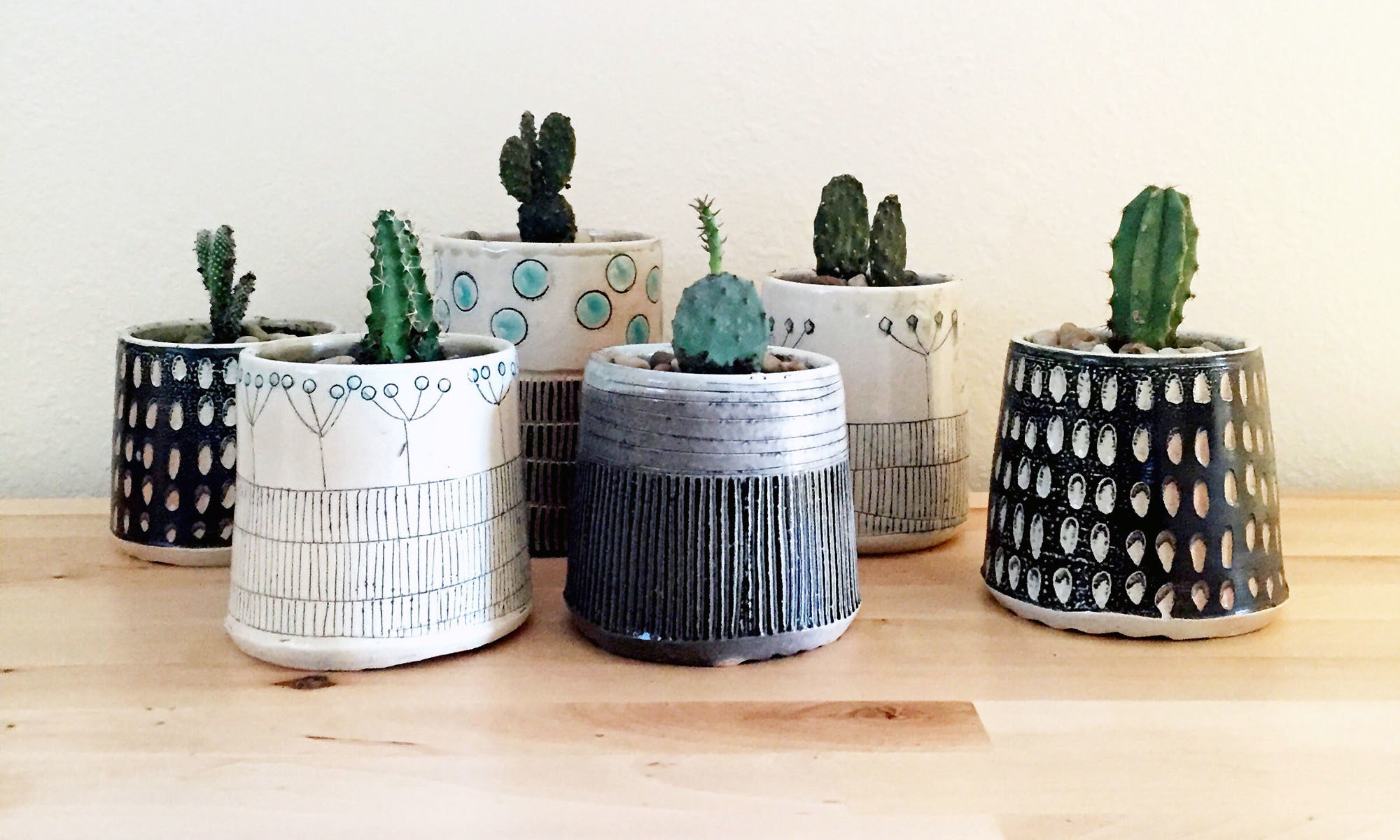This is going to be a short post today because I have been working very hard to make work for the next two sales I am participating in this weekend and next weekend. In today’s post, I’ll be sharing a 100 Days of Patterns Update.
100 Days of Patterns Update
Today is the perfect day to share some of my daily sketches for the 100 Days Project. I am breaking the project into 20 day blocks. For the first 20 days, I concentrated on circles and dots. Currently, I am exploring line work for the second 20 day block.

Ultimately, this project is an exploration in mark making. By keeping the color palette limited, the project is more cohesive and also takes out a lot of guess work for me.
After my two shows are history, I plan to start making paper clay tiles using my clay scraps and recycled paper scraps that I’ve been collecting. Then, I’ll begin the process of translating my 100 Days of Pattern sketches to the tiles. I’m pretty excited about this project. It feels ambitious, but at the same time doable since I’m breaking up the project into modules. My next 20 day block will include geometrics.
Here are a few of my favorites in the line work block:
True confession though…I worked ahead this week on my sketches because I can not see a way for me to draw the daily sketches during the Colorado Potters Guild show. I volunteered to be the show chair this spring and I have to keep too many balls in the air, so to speak. The days are long. While I love meeting all of our customers and catching up with guild members, it’s also exhausting. I’m not sure if this is considered cheating, but it sure makes my life a bit easier.
Events:
You will find me at the Colorado Potters Guild Spring Sale May 4-6, 2017.
First Plymouth Congregational Church
3501 South Colorado Boulevard
Englewood, CO 80113
(Hampden + Colorado Blvd)
May 4 – 4:00 – 8:00 PM (Opening reception)
May 5 – 9:00 AM – 8:00 PM
May 6 – 9:00 AM – 5:00 PM
On May 13, 2017, I’ll be sharing a booth at the Horseshoe Market in Denver with Sarah Christensen Ceramics.
Olinger Moore Chapel
4345 West 46th Ave
Denver, CO 80212
9:00 AM – 4:00 PM
I missed last Feature Friday’s blog post. Unfortunately, my guest has a very busy show schedule too and was unable to participate due to time constraints. I hope that I’ll be able to share her work in the near future because I’m such a fan.
In the mean time, despite my busy schedule, I’ll be sharing the work of Noelle Horsfield on May 5, 2017 for Feature Fridays. My post is already formatted – all I need to do is hit publish. I can’t wait to share her work and interview with you.





























